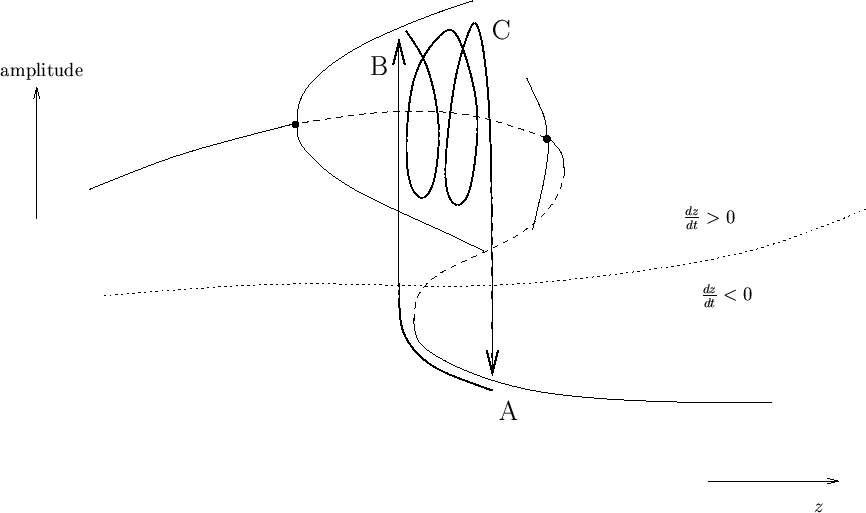 |
Figure 6 sketches how the bursting behavior of equations (3-5) is related to the bifurcation analysis of equations (6,7).
 |
Suppose that we start at point A. We are on a fixed point of equations
(6,7), which corresponds to the rest state of the neuron.
Now, ![]() will slowly decrease and we follow this branch of fixed points
until we reach the saddlenode bifurcation. Here the system makes a
jump to point B, i.e., to the stable periodic orbit, which corresponds to
the active state. Now,
will slowly decrease and we follow this branch of fixed points
until we reach the saddlenode bifurcation. Here the system makes a
jump to point B, i.e., to the stable periodic orbit, which corresponds to
the active state. Now, ![]() will slowly increase with the neuron
actively firing until we reach the homoclinic bifurcation at C. Here
the periodic orbit ceases to exist and the system makes a jump back to
point A, i.e, to the fixed point. This behavior repeats, giving a
sequence of bursts. Note that as the homoclinic bifurcation is
approached, the period of the periodic orbits increases - this is
an example of adaptation as described in the lectures.
will slowly increase with the neuron
actively firing until we reach the homoclinic bifurcation at C. Here
the periodic orbit ceases to exist and the system makes a jump back to
point A, i.e, to the fixed point. This behavior repeats, giving a
sequence of bursts. Note that as the homoclinic bifurcation is
approached, the period of the periodic orbits increases - this is
an example of adaptation as described in the lectures.
Verify from the time series in Figure 4 that the variables are
behaving as described above, and that the jumps between the rest and active
states occur near the values of ![]() at which the appropriate bifurcations
of equations (6,7) occur.
at which the appropriate bifurcations
of equations (6,7) occur.
It is interesting to modify the Matlab programs to see how the bursting
behavior is affected. For example, what happens if ![]() is decreased?
What happens for larger
is decreased?
What happens for larger ![]() , say
, say ![]() , or smaller
, or smaller ![]() , say
, say ![]() ?
?